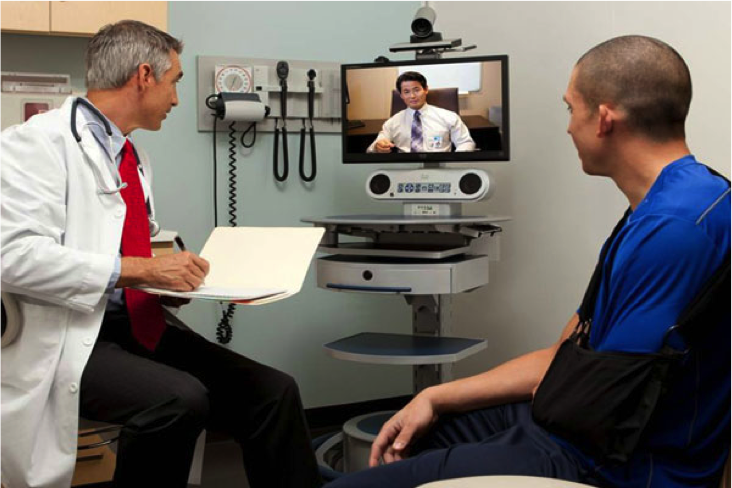

How to Plan for Telehealth for Your Organization?
Telehealth integration has considerable risen in recent years within both healthcare systems and private practices. Telehealth is here to stay. Numerous healthcare organizations claim to have achieved success with their telehealth programs in improving patient care and patient engagement. However, outside observers are left to wonder about how tangible the success for these healthcare organizations is and what does it translate into. Healthcare organizations measure success of telehealth programs differently:
Some organizations base their success on ROI, some on theirpatient satisfaction, and others base their success on patient readmission reduction.Measuring success is predicated by many factors, most notably the purpose of the program. Let us start by addressing some key points to consider when you are deciding whether to implement telehealth at your hospital or practice.
Understand your Stakeholders
First step in assessing your telehealth needs is determining what your users and stakeholders’ need.The success of a telehealth program depends on user acceptance and satisfaction. In order to accomplish this, begin by understanding what are the pain points of patients and clinicians. Understand where telehealth could help alleviate the pain points and improve care.
This is where Human-centered design (HCD) and design thinking approach can be greatly beneficial.The HCD and design thinking approach puts people-first and technology as the last piece in the process. The design thinking process is detailed below (Source: ReferralMD):
- Empathize – understand who your users are and what their needs are. Conduct in-depth research to gain deep insights regarding users and their concerns
- Define – in this phase, formalize your user study outcomes and organize into meaningful information. At this stage, organize your results from the Empathize stage and determine what the user needs and wants are.
- Ideate – this is the concept formulation stage where a multi-disciplinary team comes up with wide-array of ideas for creating solutions for the user needs. The crux here is the breadth of ideas.
- Prototype – Now, build a prototype with your team that represents a possible solution, or range of solutions. The prototype can be high-fidelity (a nearly complete solution or a minimum-viable product), a low-fidelity (basic mockup, loosely defined operations), or mixed-fidelity (high and low).
- Test – test your prototype with users, incorporate their feedback to improve the prototype, and retest until the prototype is as perfect as it can get.
- Implement – deploy the solution in an operational setting with the users.
A step by step guide to designing a telehealth program.
1. Why are you implementing telehealth?
While many large healthcare organizations are quick to implement a telehealth program, there has to be specific purpose for implementing it. Some hospitals will pour considerable resources into telehealthwithout clearly defining or understanding why and how to use such capabilities. This is perfectly fine if your organization has significant budget and can wait to see outcomes; however, many healthcare organizations do not have such an option.
A good option to determining your needs is to use design thinking to ask the why question:

Is there a patient demographic that needs access to remote care?
- Are you treating rural population?
- Do your patients need access to care at odd times?
- Do you have patients that need consistent care?
- Are you trying to reduce readmission?
- Are you trying to reduce frequent visits by certain patient groups?
2. Measuring Program Success
Following up from the above statement, establish purpose and value for your program. Are you treating patients with chronic illness who have avoidable physician visits? Are you offering after-hours medical services? Are you offering during hours remote medical consultations for minor cases?

Build a business plan for how you will implement, use, and market your telehealth services. Establish metrics for meeting your goals (remote visit/care, readmission reduction, reducing unnecessary visits, etc.). Metrics will vary for every hospital or practice; however, unless your organization has a very large budget for telehealth, you will need to see ROI from the implementation and commitment. ROI can mean different things for different organizations; aside from the obvious payer reimbursement, ROI can be measured in terms of patients seen remotely or reduction in visits for minor health issues.
Yet, at the end of the day, reimbursement will remain a priority. Within your business plan, determine the anticipated operating costs for telehealth program and sources for reimbursement/revenue. Does your state have telemedicine parity laws? Are there Medicare patients that may be eligible for telehealth services?
3. Gaining Traction
Once you have determined the purpose, value, and users of your program, the next step is to determine how you will interact with your audience. Specifically, how will you onboard existing patients onto your telehealth program. The difficulty lies in understanding your patient’s needs and helping them realize that a remote visit can be useful and beneficial.

By this point, you would have already determined which patient groups to target. Next is to understand how to reach out to them.
- Inform and educate your patients about televisits when they come in for an in-office visit.
- Place information/brochures within your office – have the front staff inform the patients when they check in or when they leave
- Send information in the mail
- For follow-up visits, provide patients the option of a televisit and follow-up with them to ensure that they are set for the visit
- For the more tech-savvy patients, use digital channels such as emails to onboard them.
The first few months will be a struggle to attract patients for televisits; in fact, it may take many months before you see traction. However, within your strategy and business plan, establish a realistic number for the first year. Base your year one ROI projections on the total patients you anticipate to use televisit broken down by patient demographics (and reimbursement types). This will help your organization better plan for televisits and provide metrics for measuring ROI.
Before establishing a telehealth/telemedicine program at your organization, establish the purpose, value, and outcome for such a program. Build an effective implementation and use strategy within a business plan. The technology solution you opt for will be the final piece of your plan. Until you haven’t determined the purpose, use case, capability requirements, and cost for your program, refrain from choosing a telehealth platform – don’t choose a platform and try fit it to your needs.
About DocToDoor
DocToDoor is a custom branded Telehealth solution designed to empower physicians to manage care through the entire care continuum for post-visit, chronic care, and post-op recovery. We are empowering physicians with user-centric remote patient monitoring & engagement and telemedicine platform to manage and care for patients through the entire breadth of patient-provider relationship.


